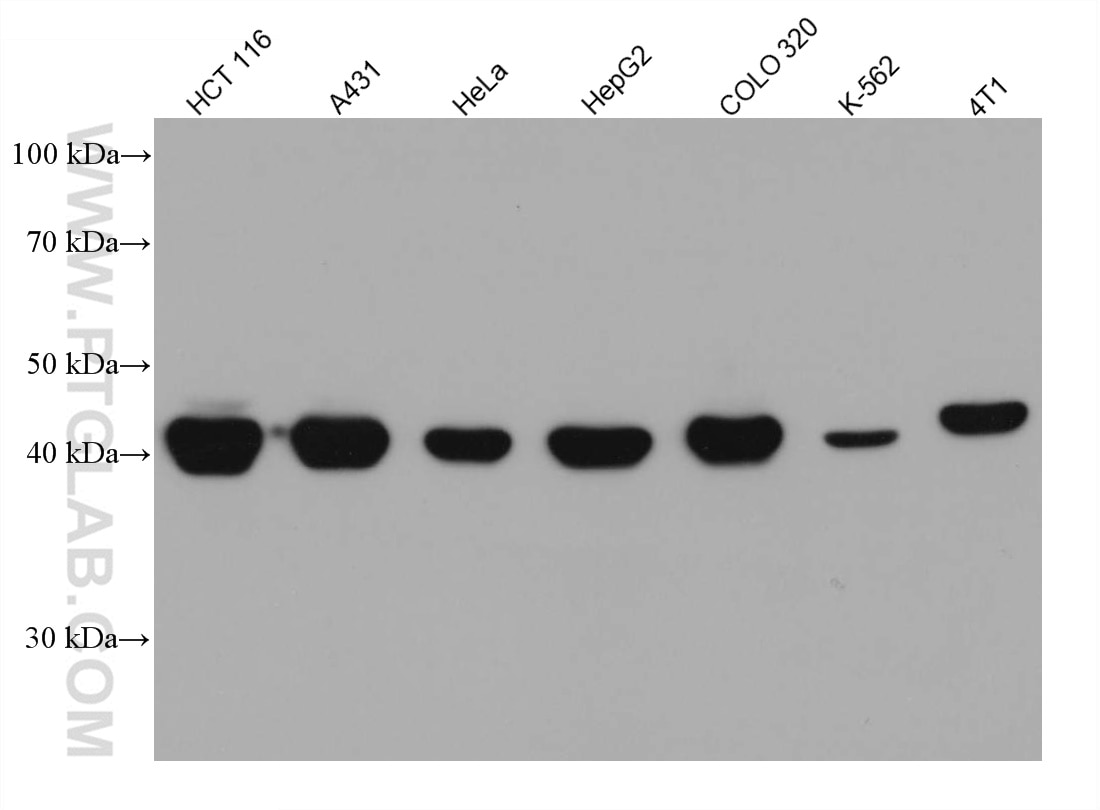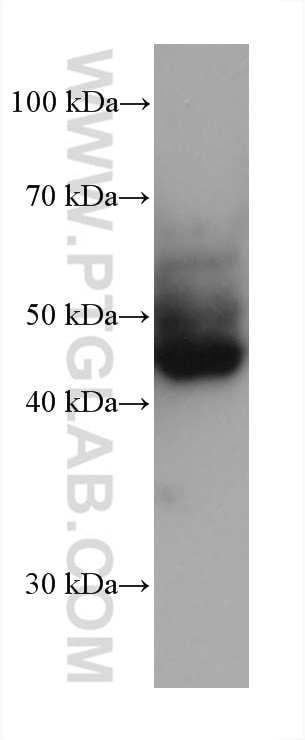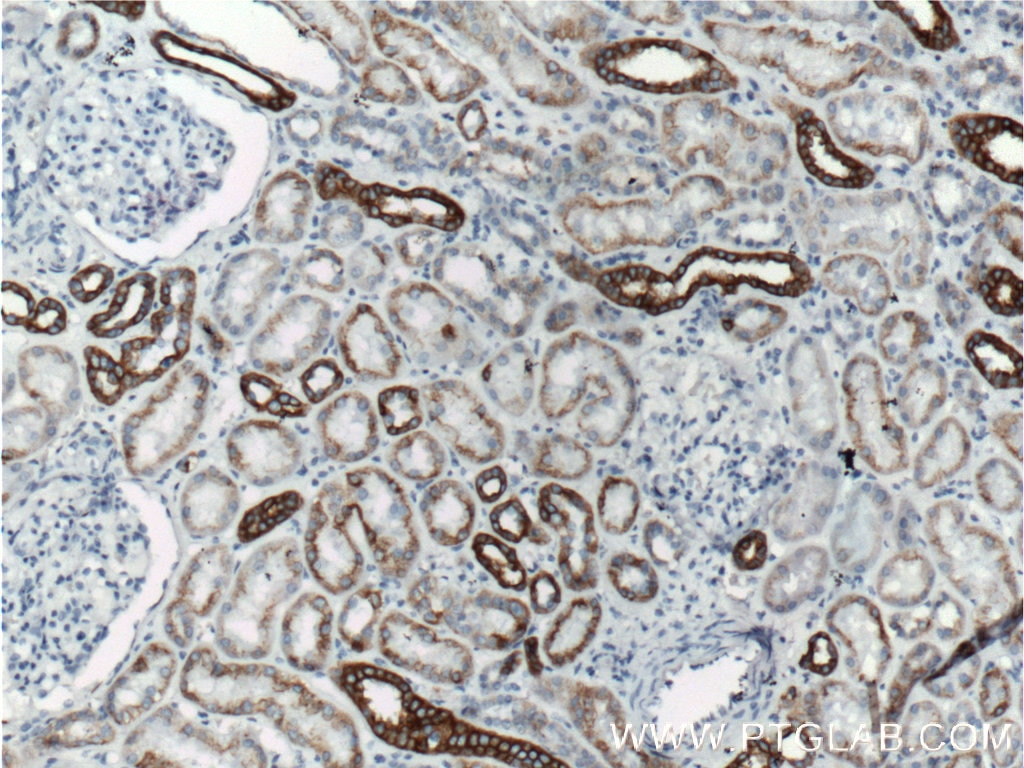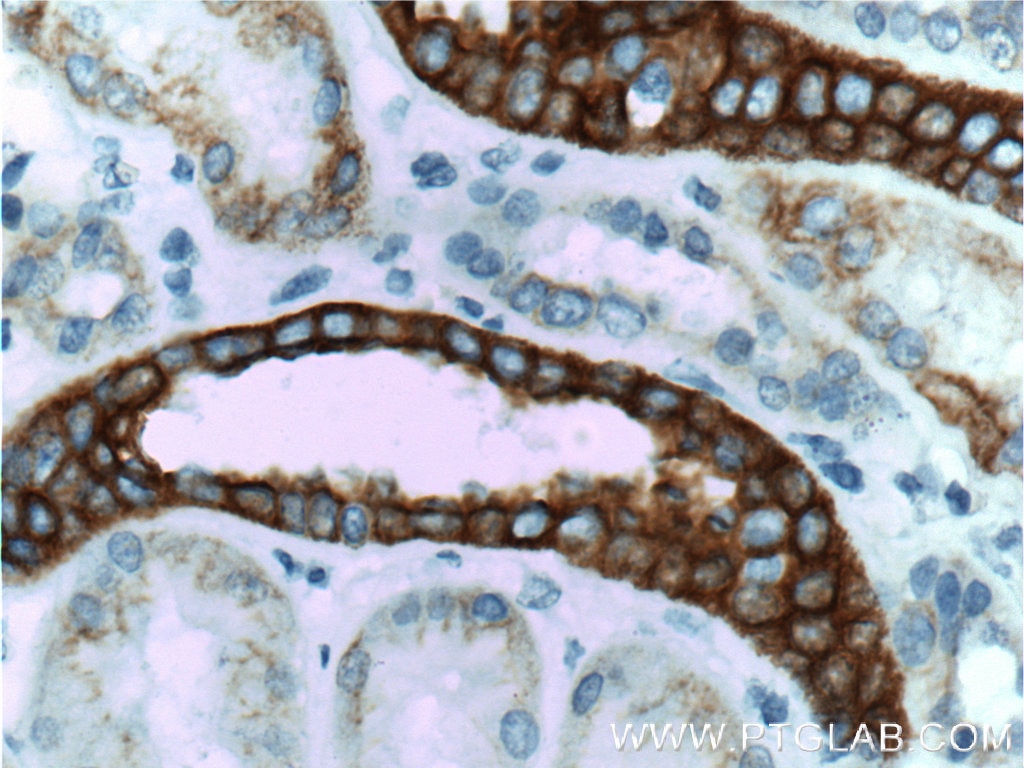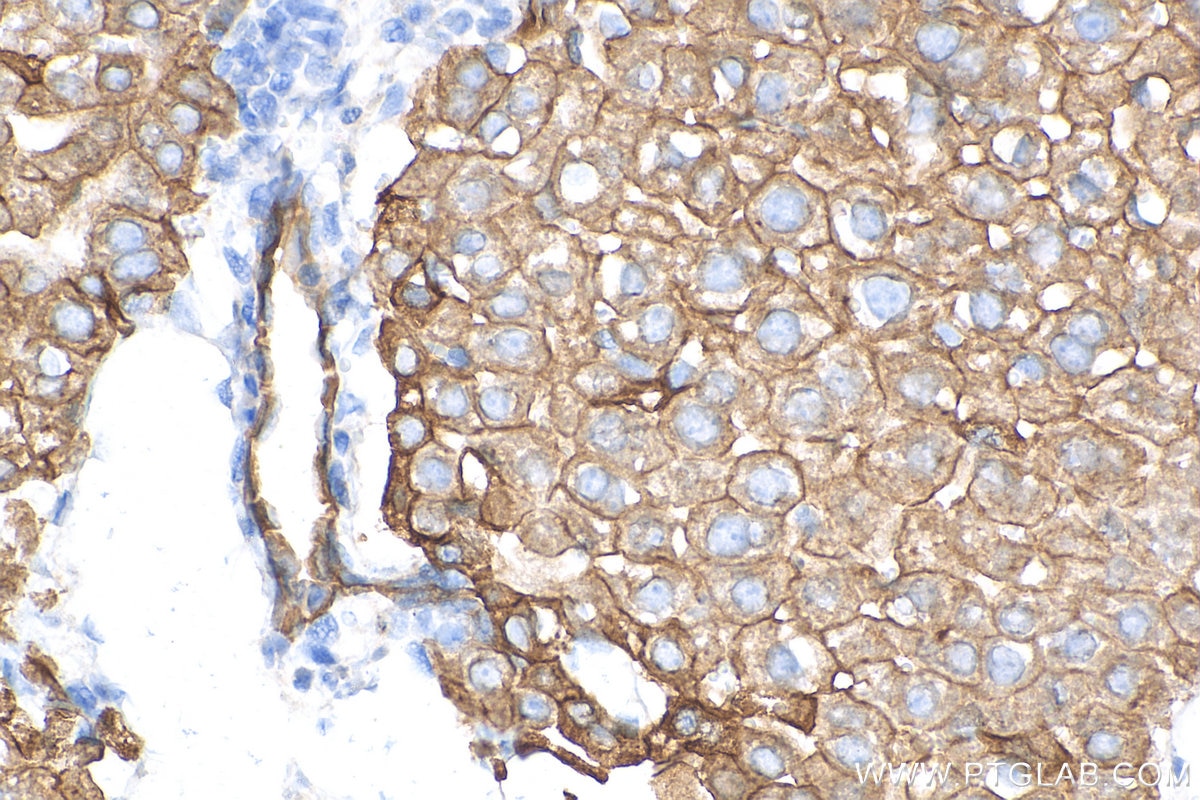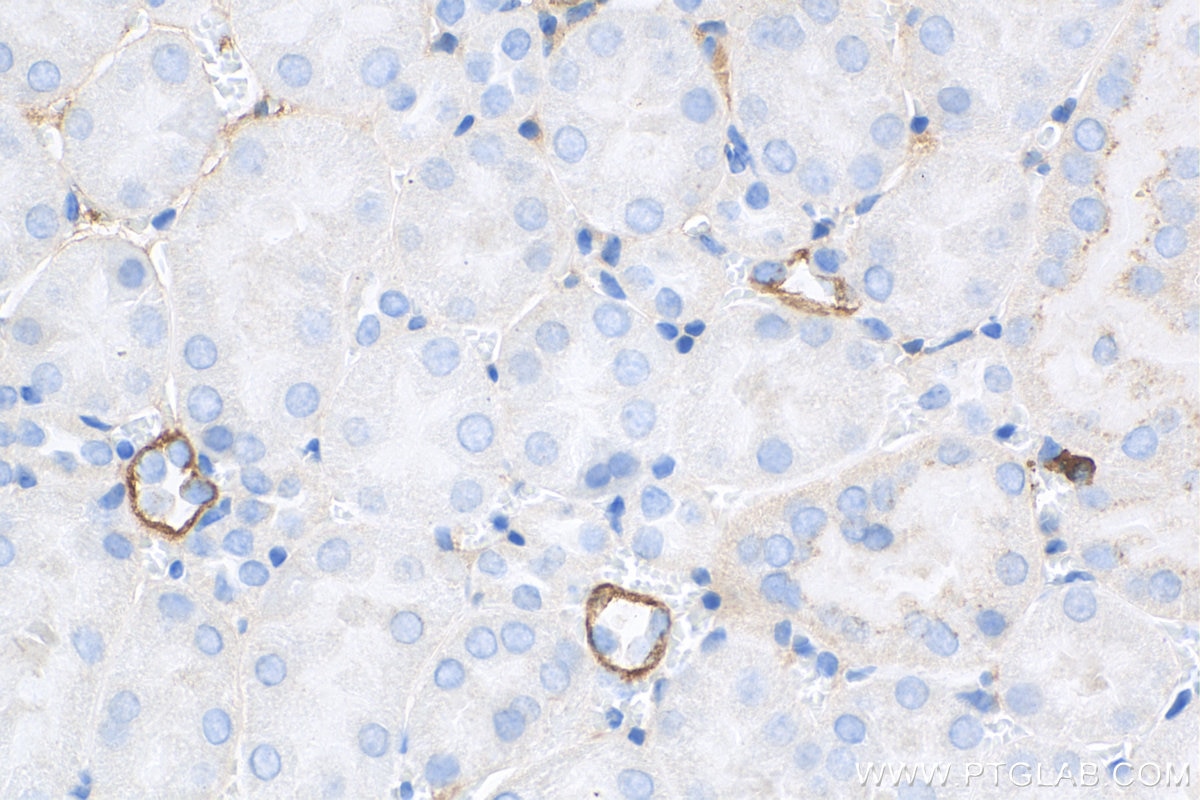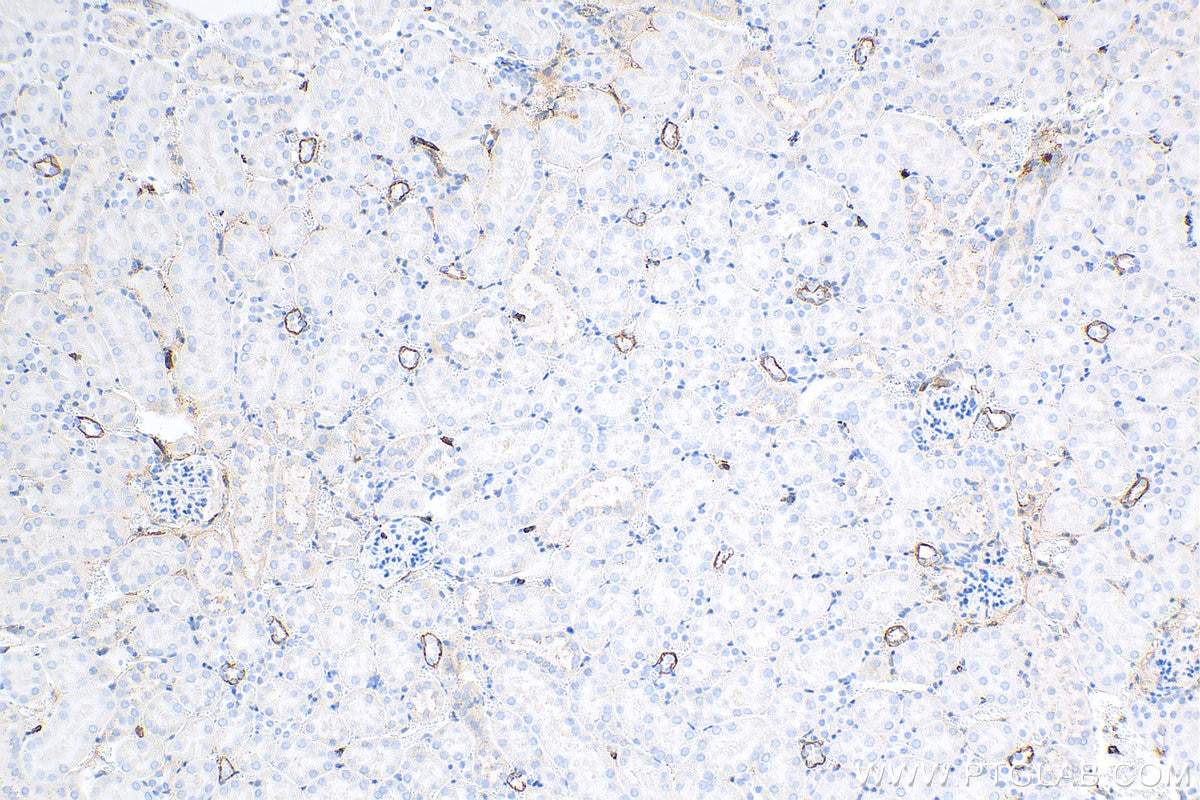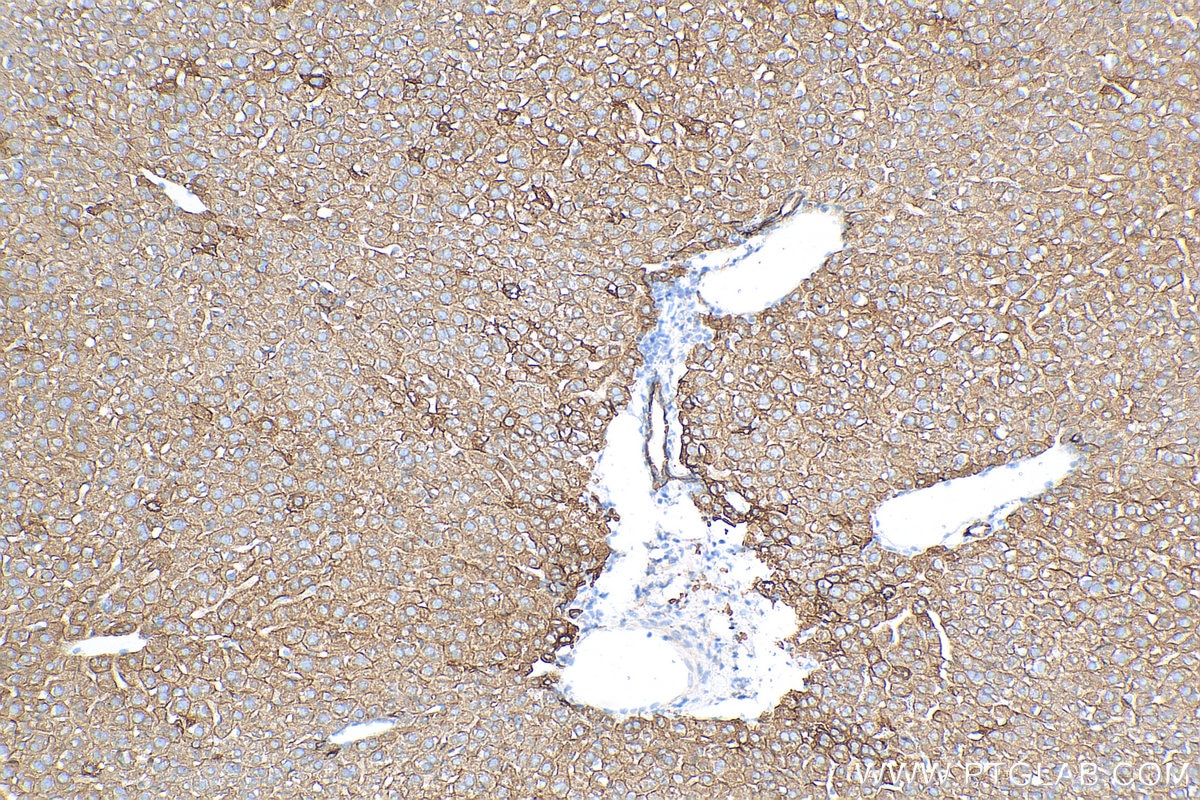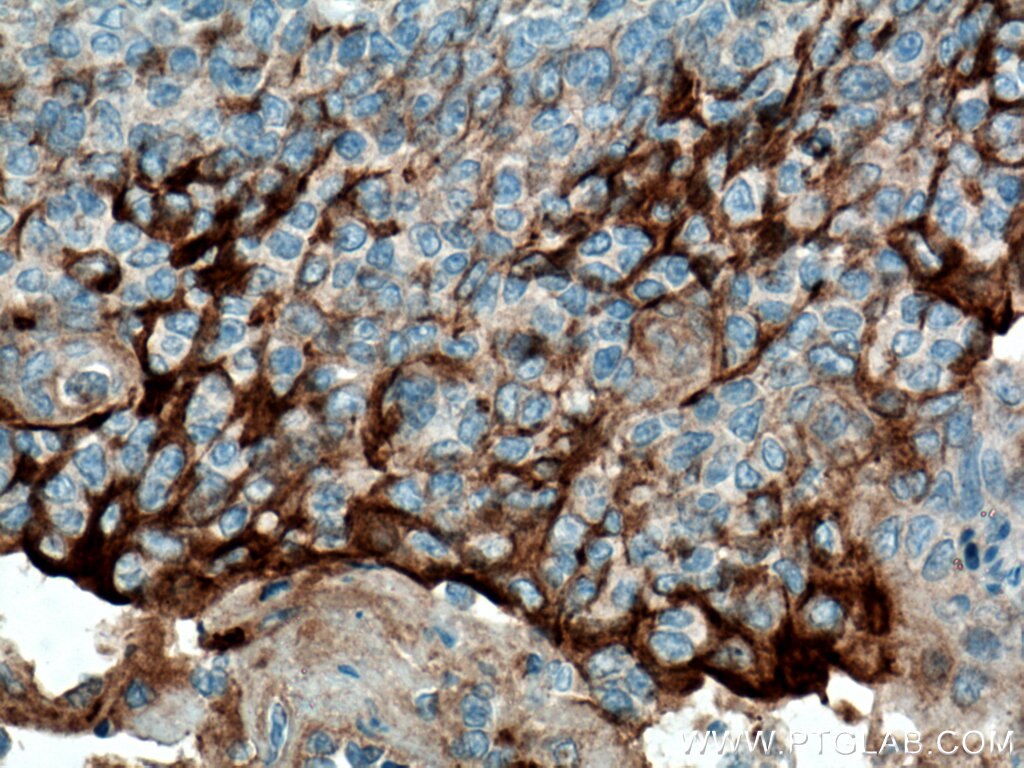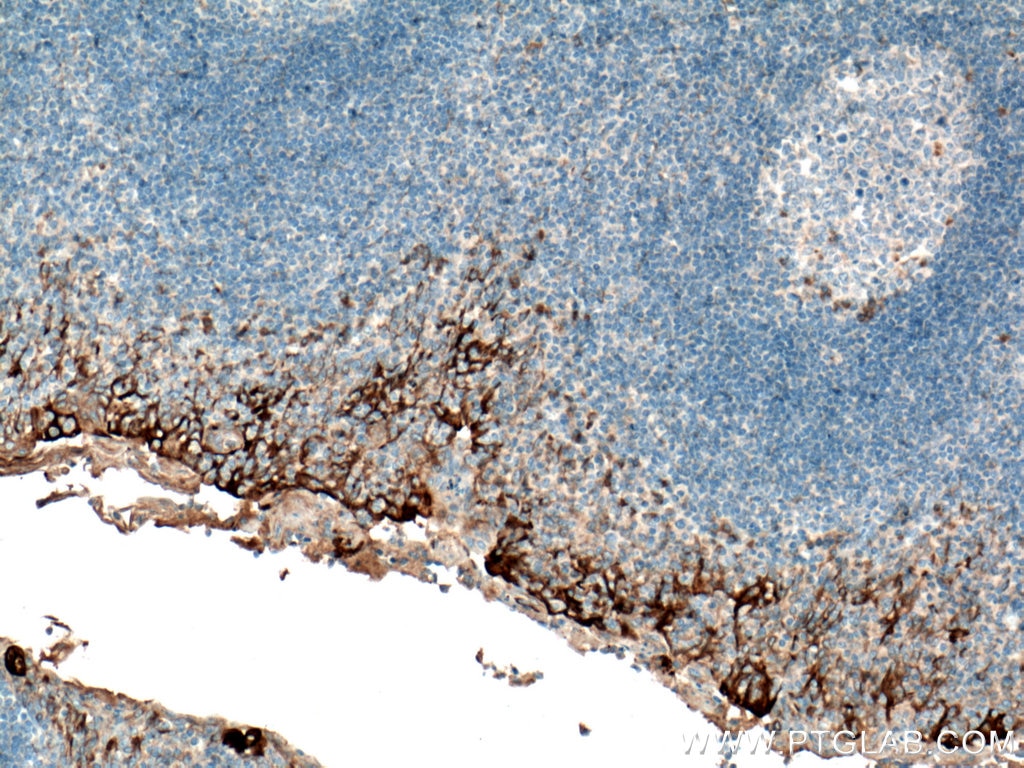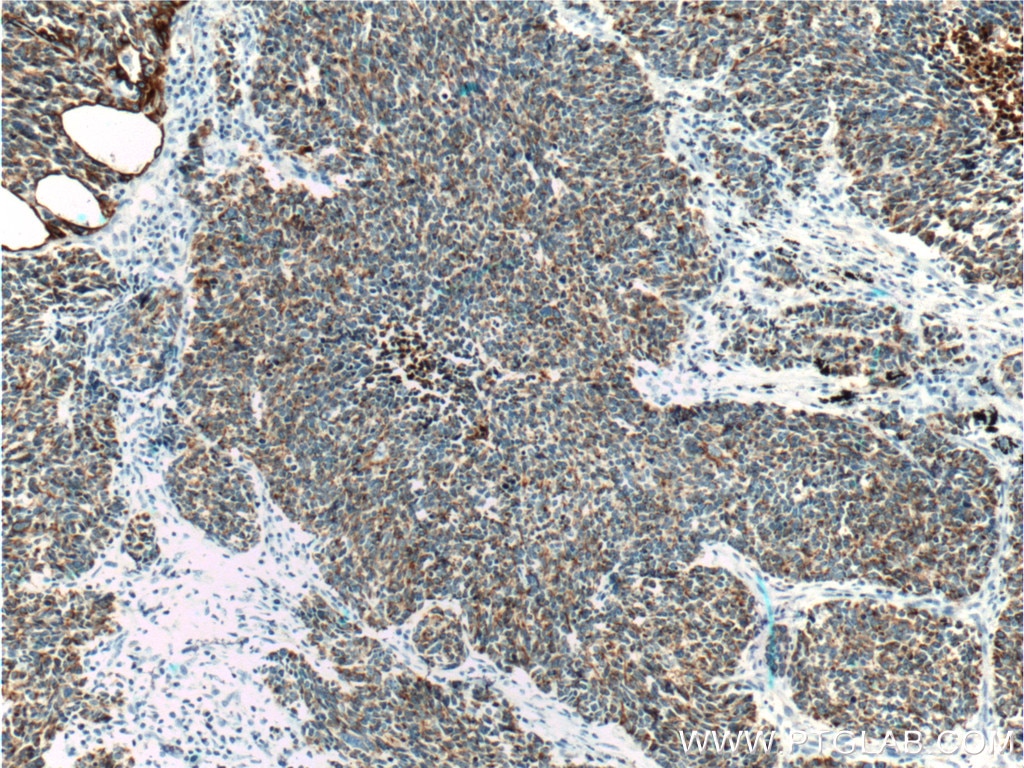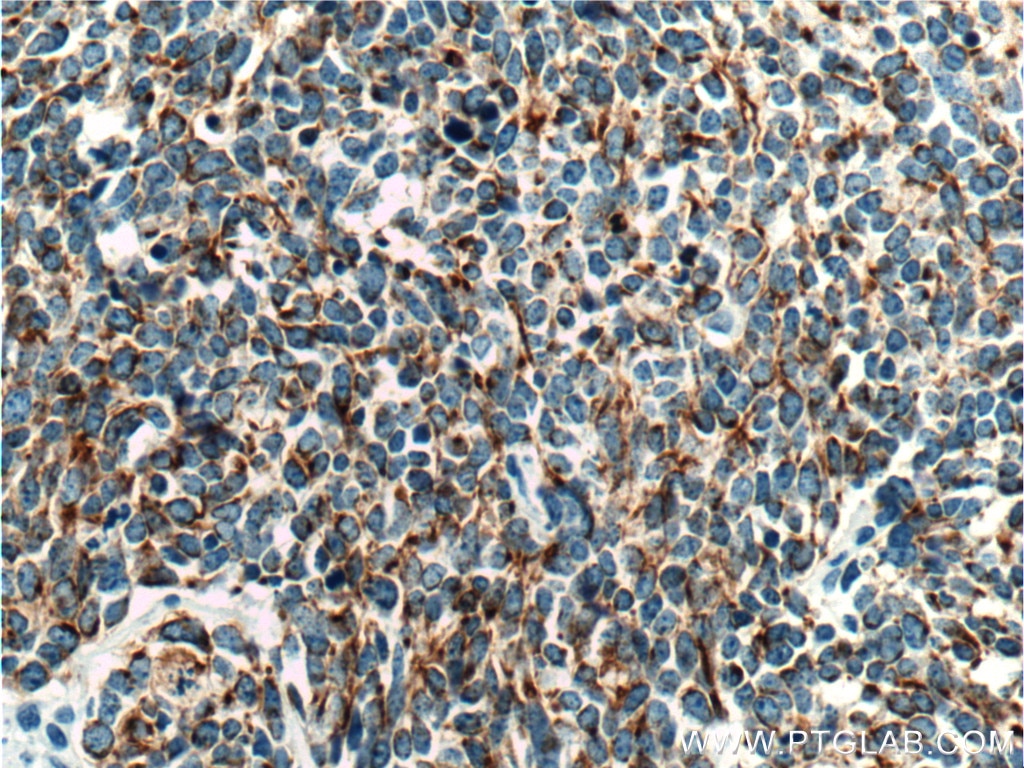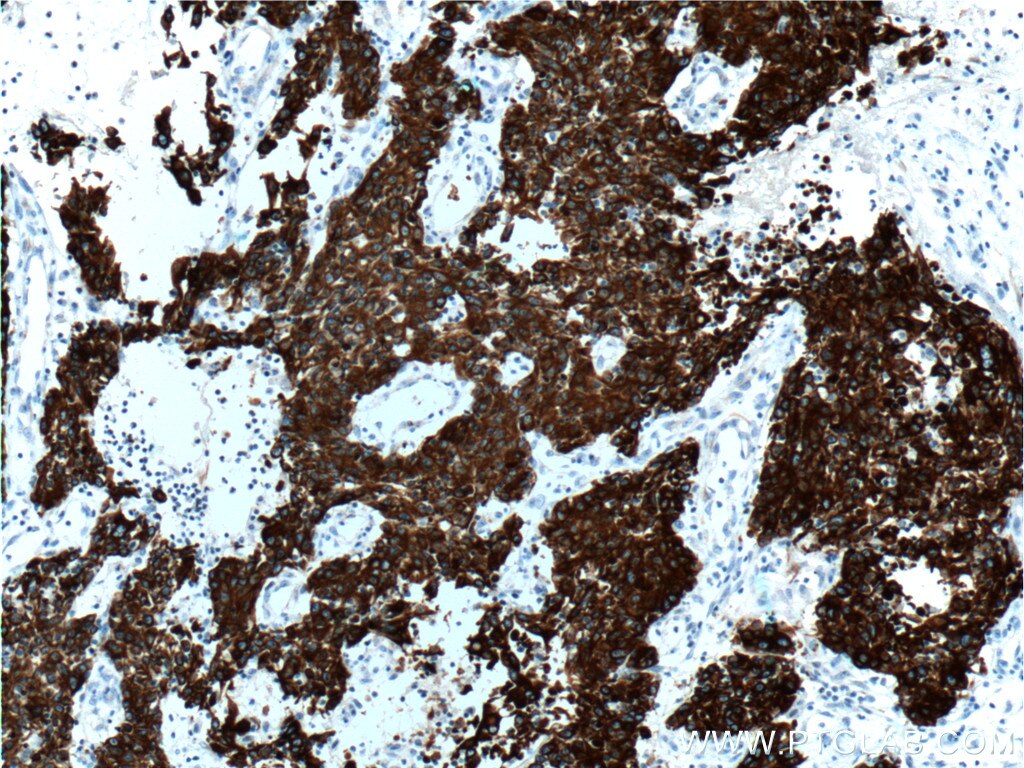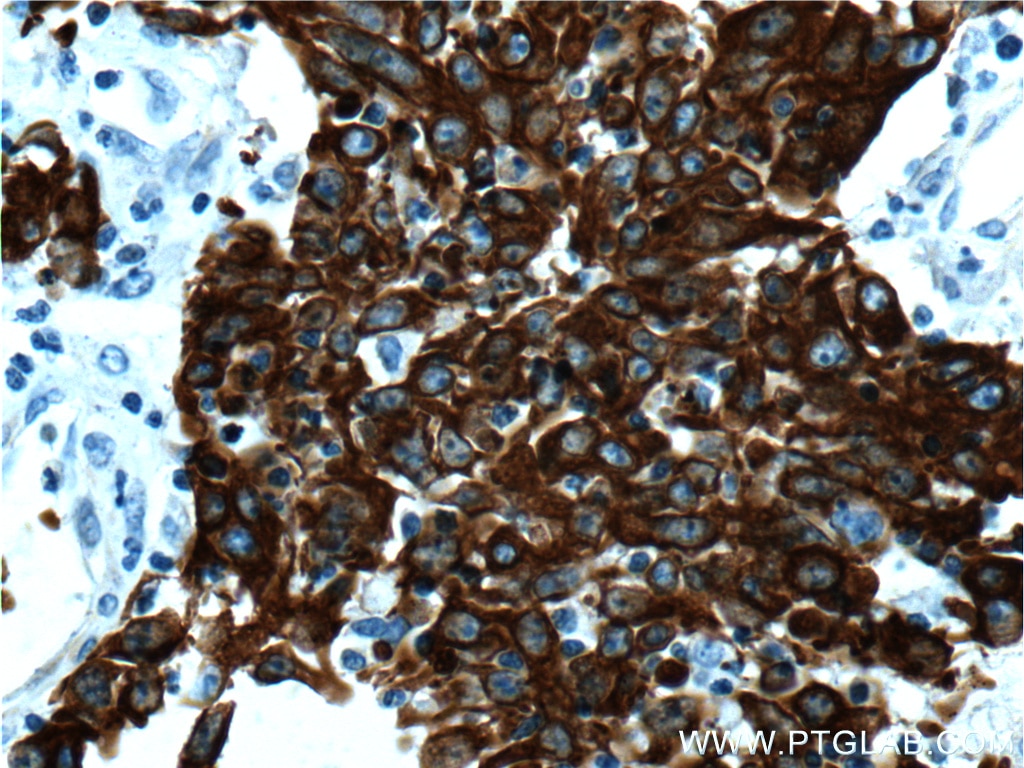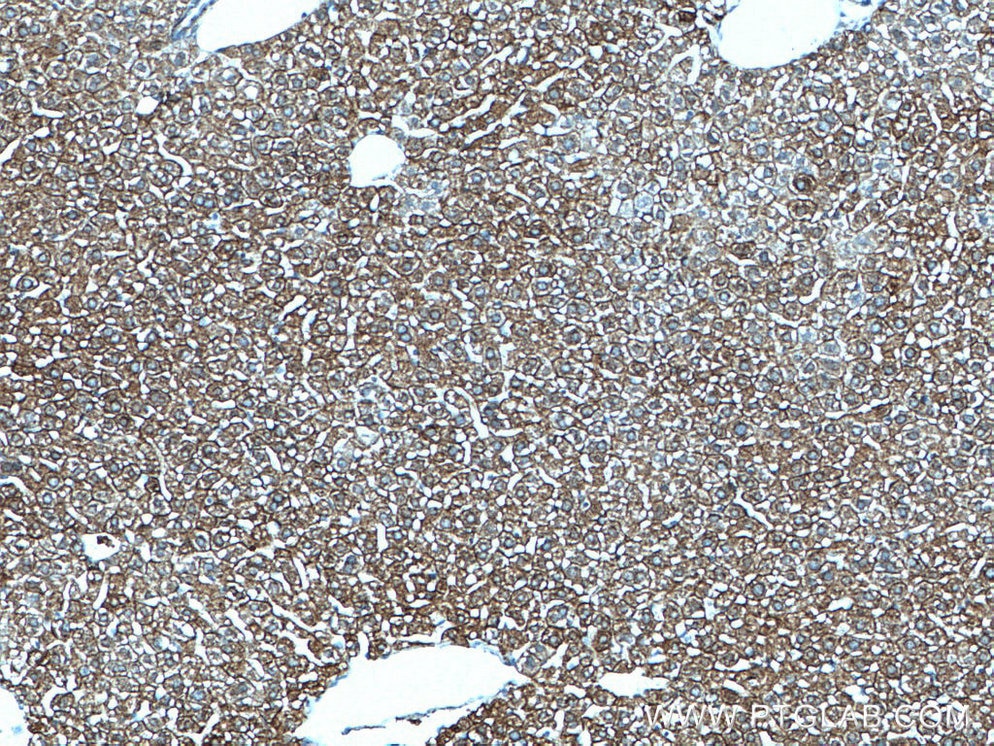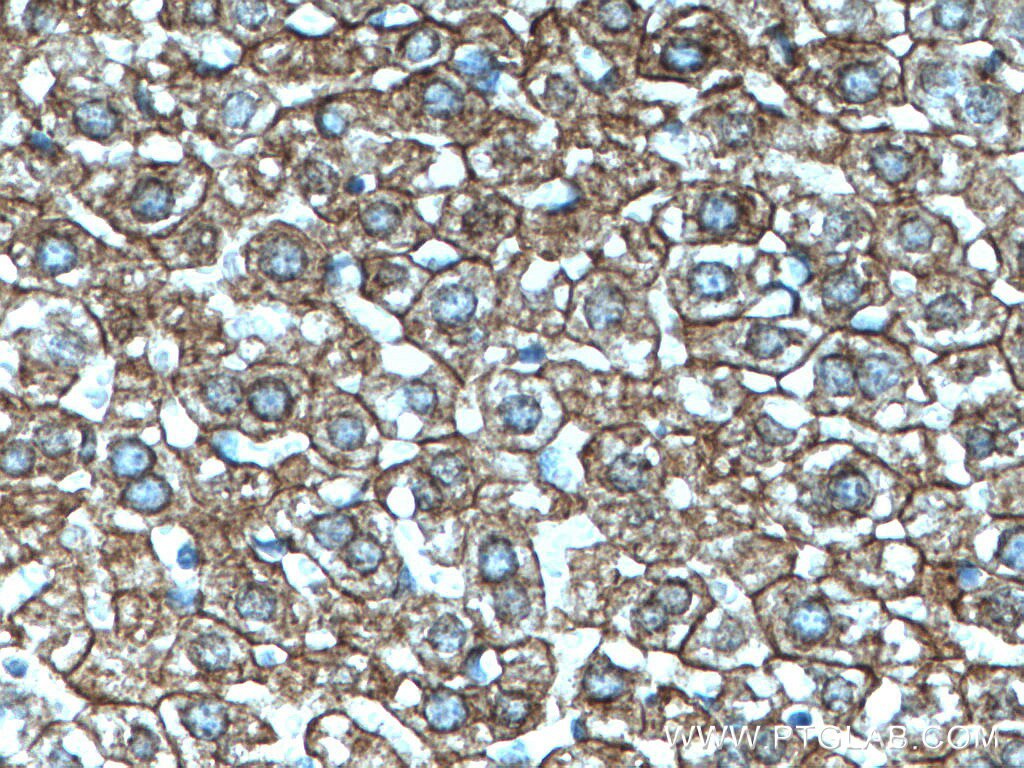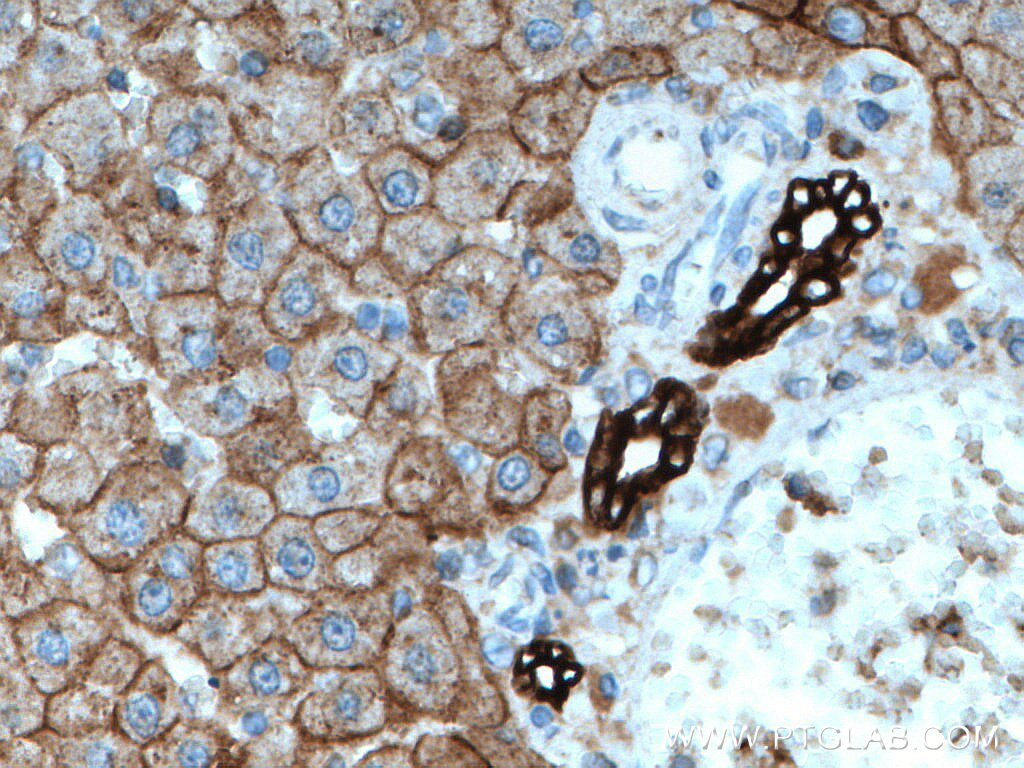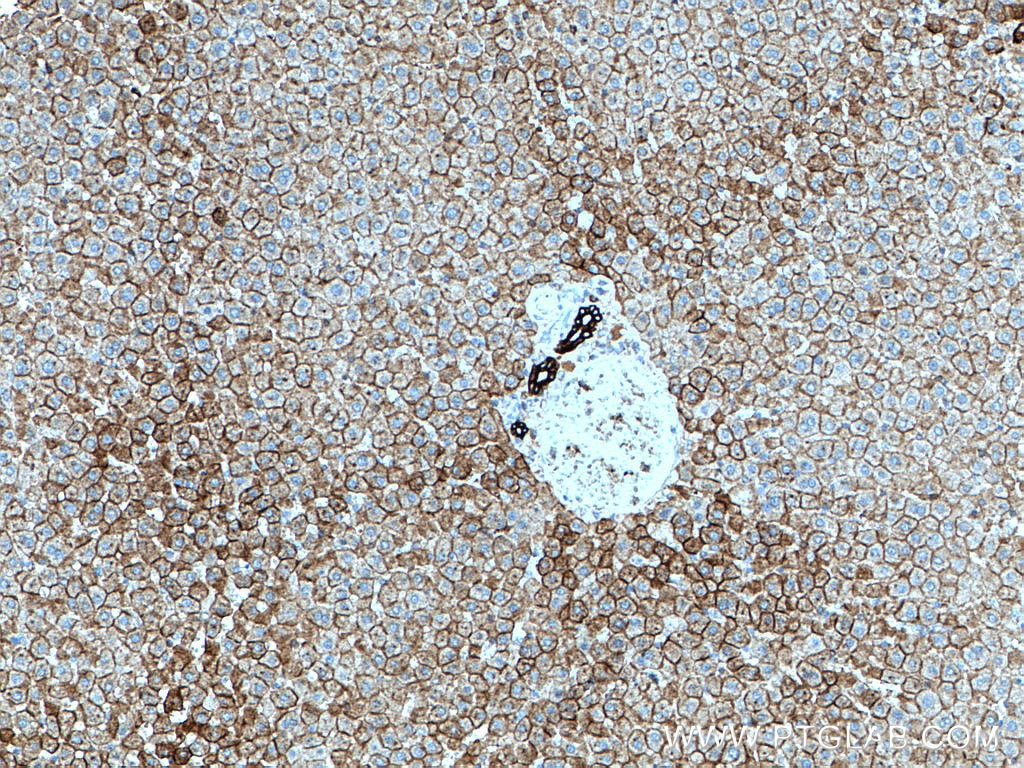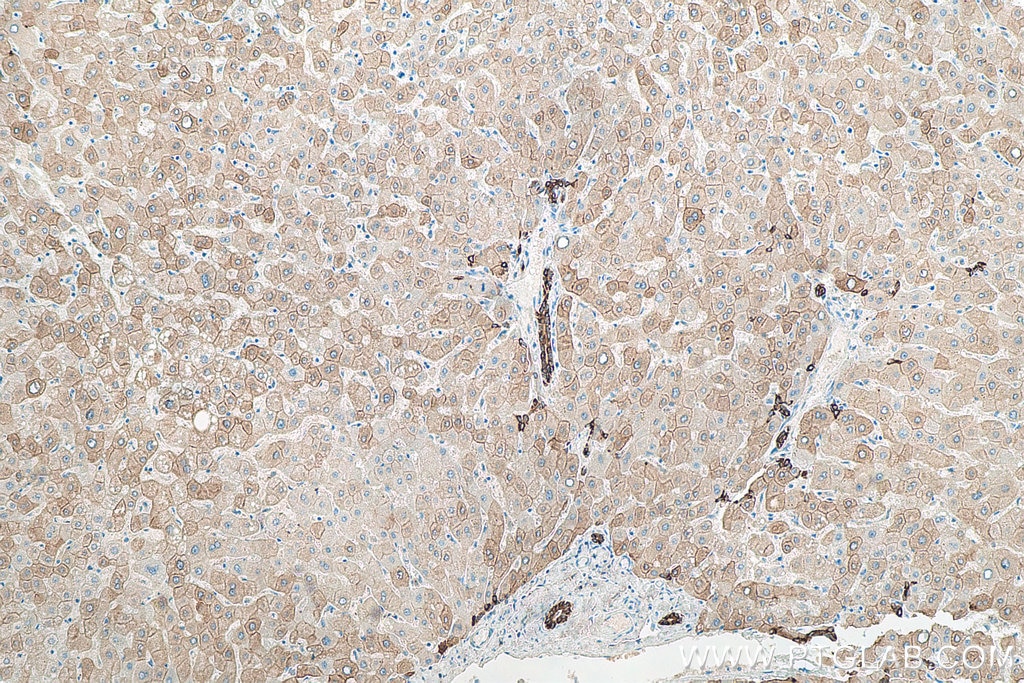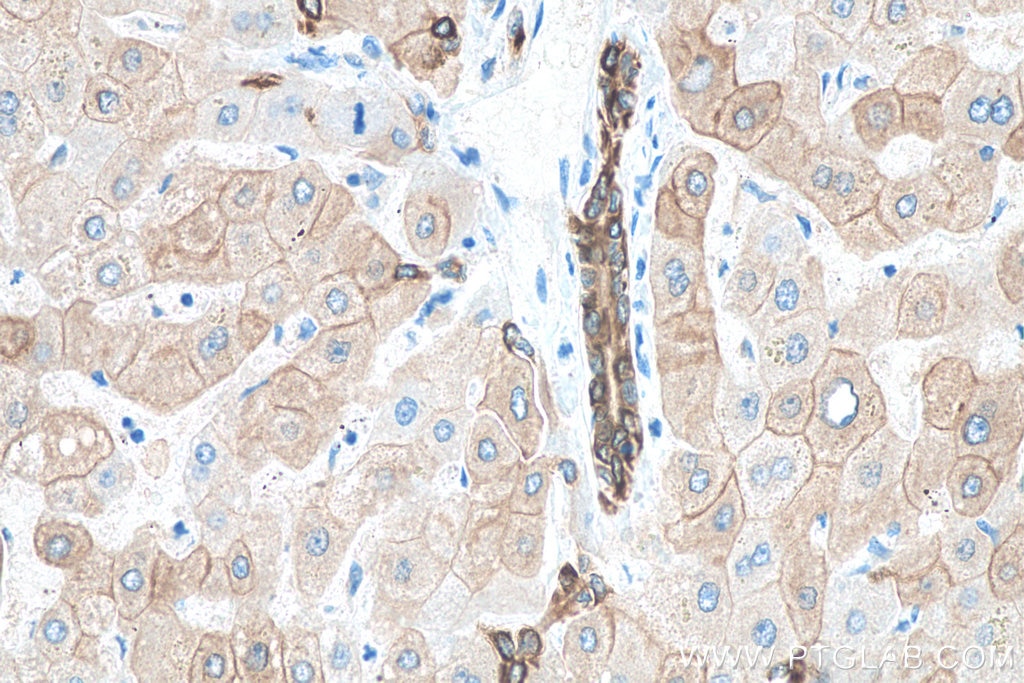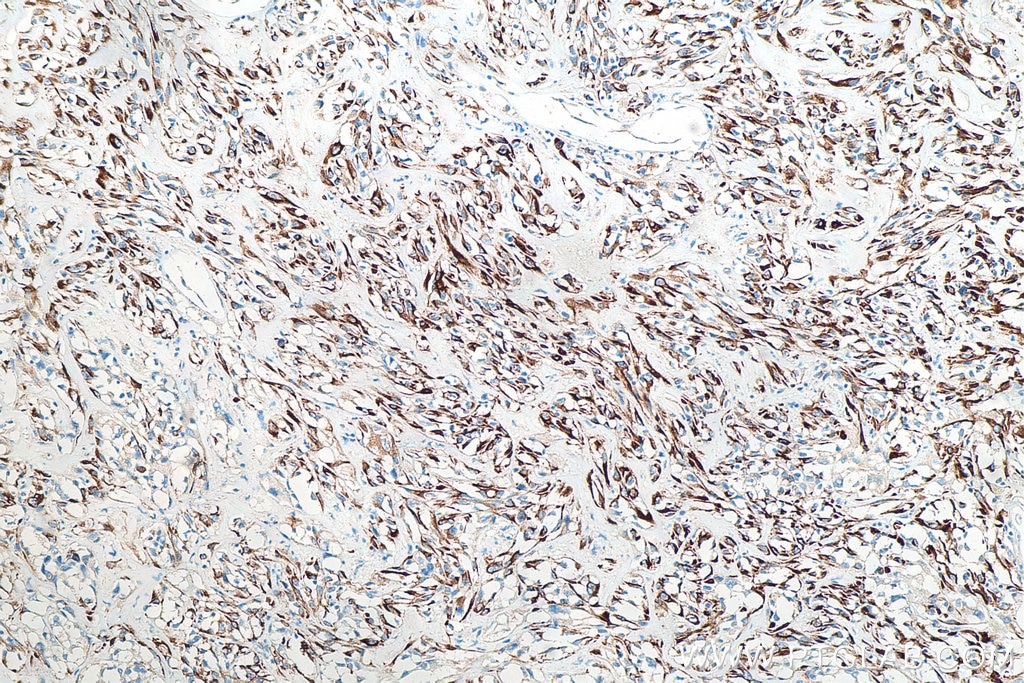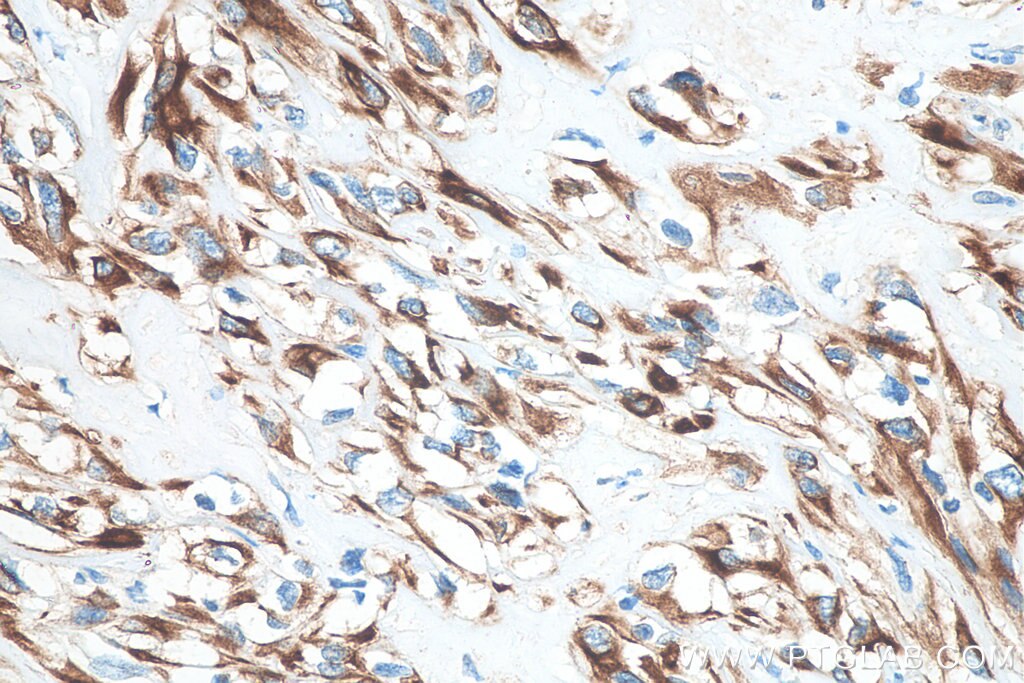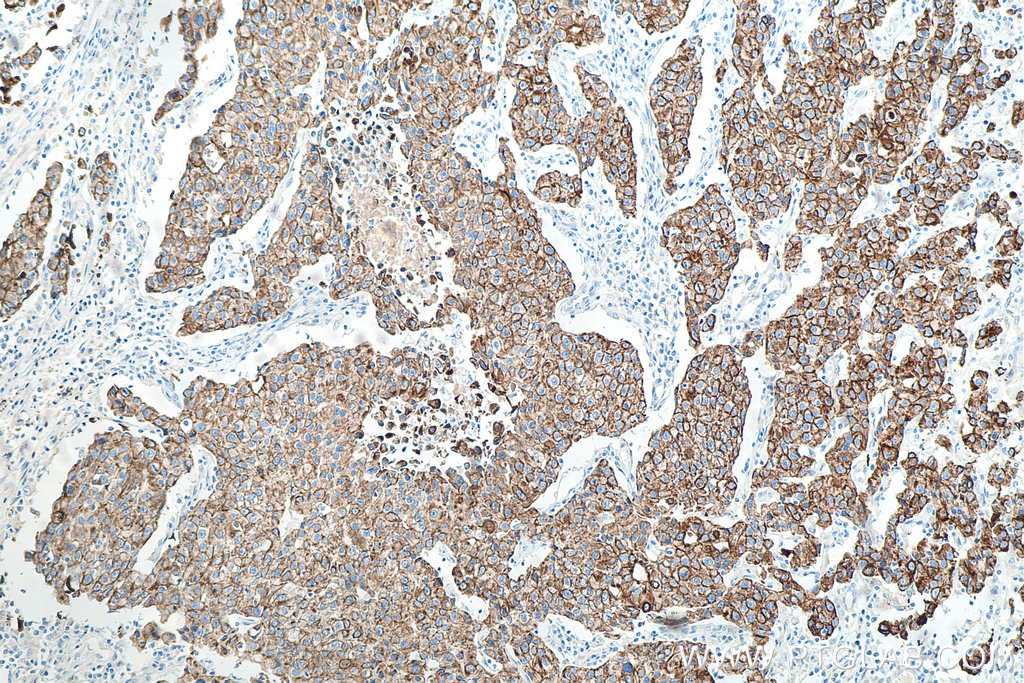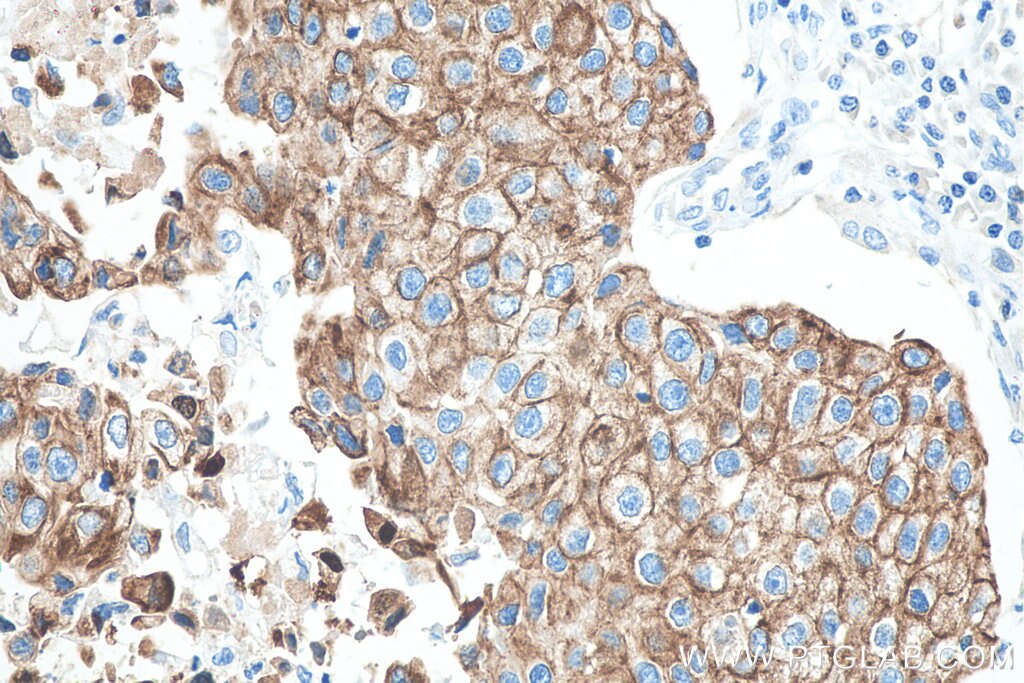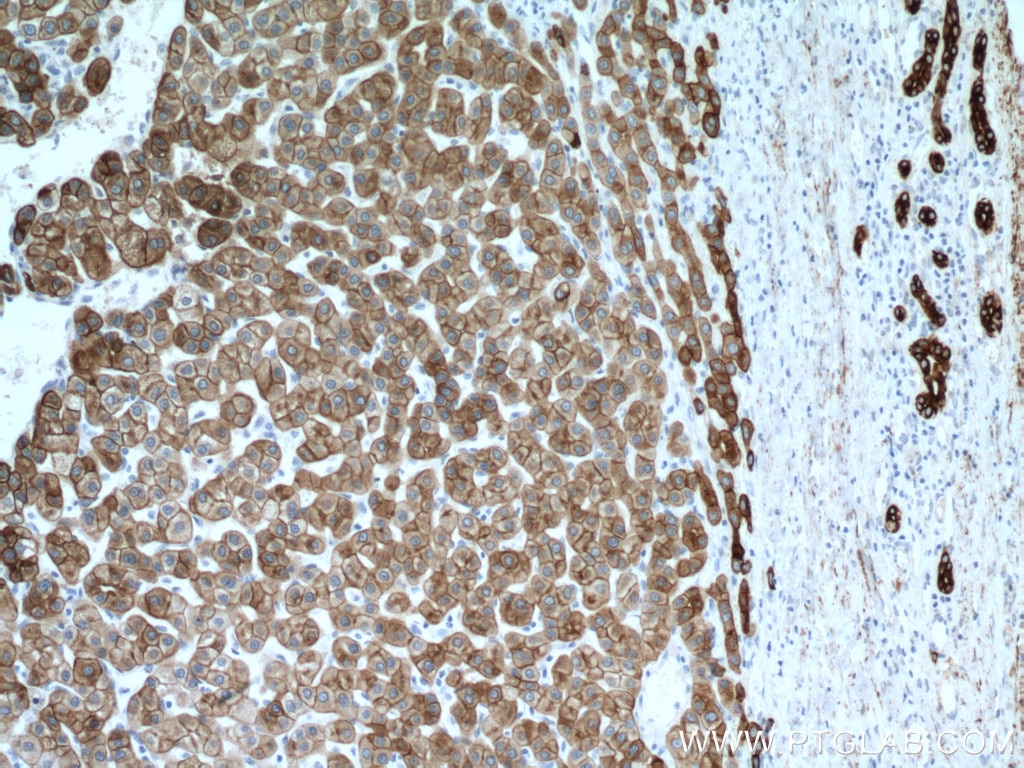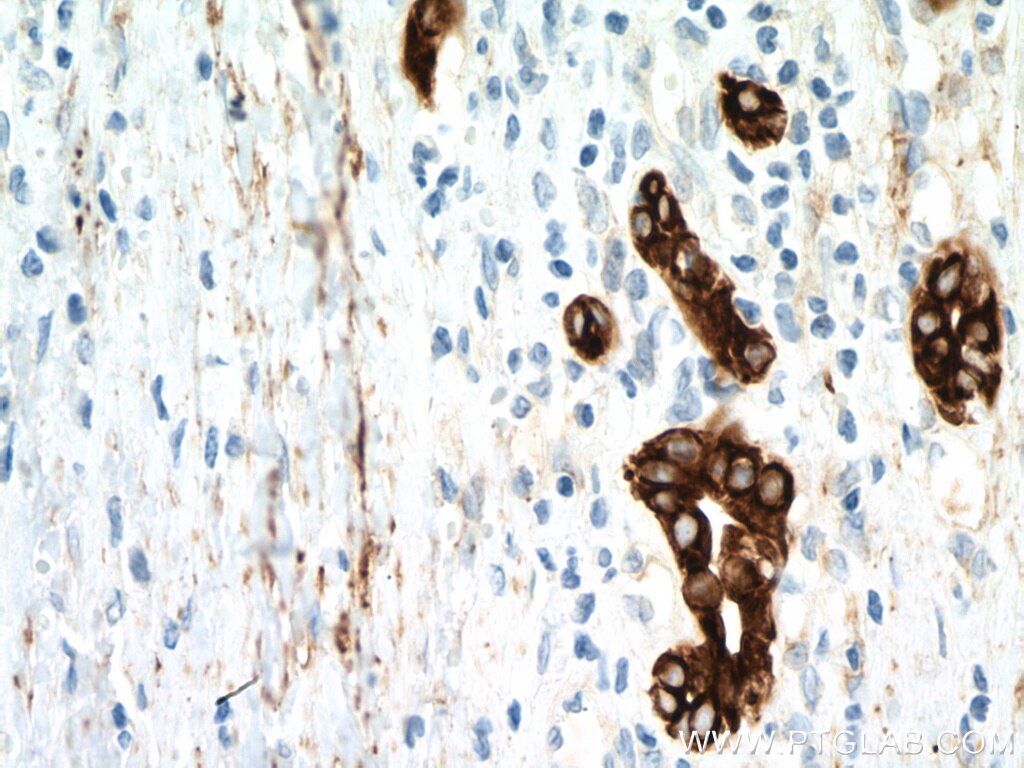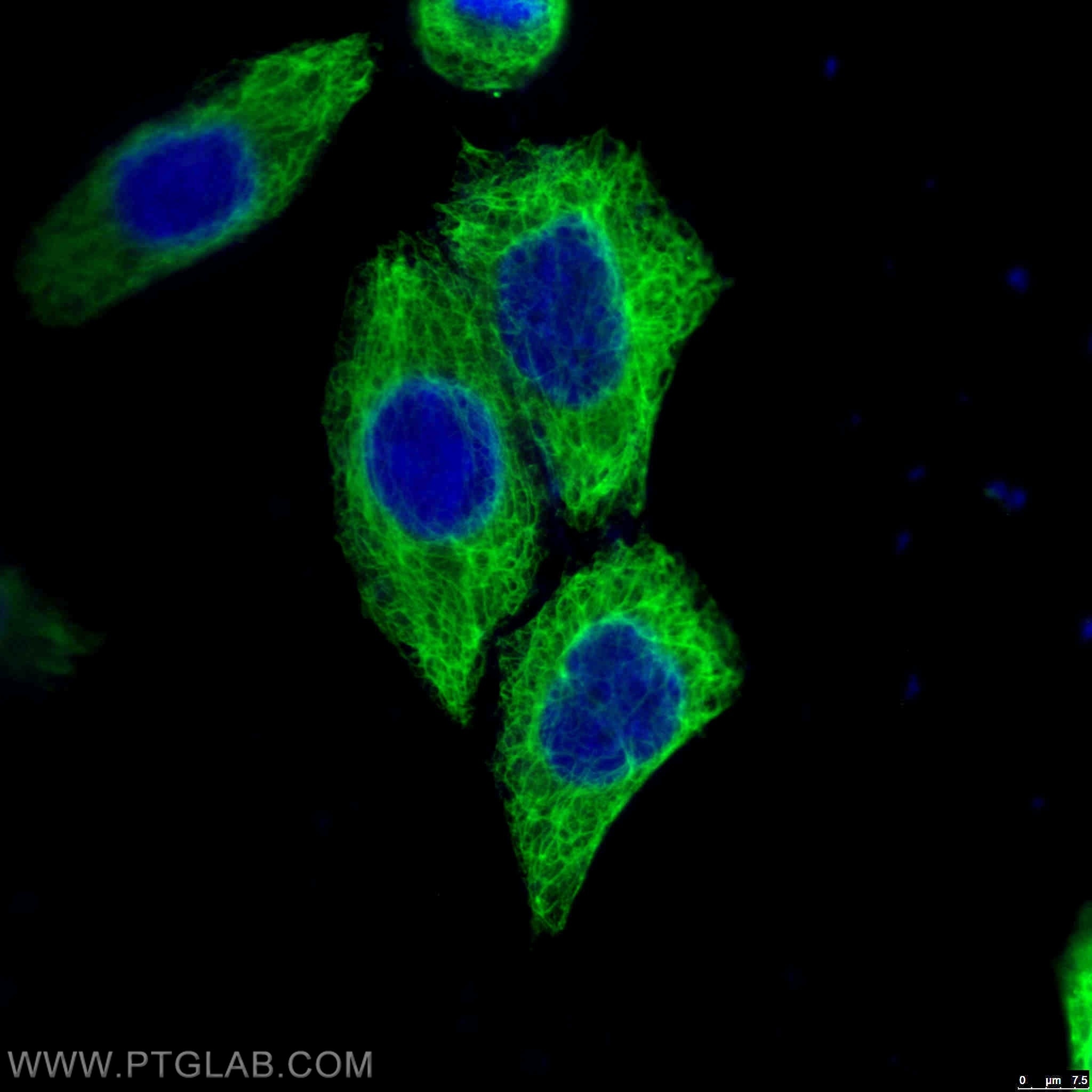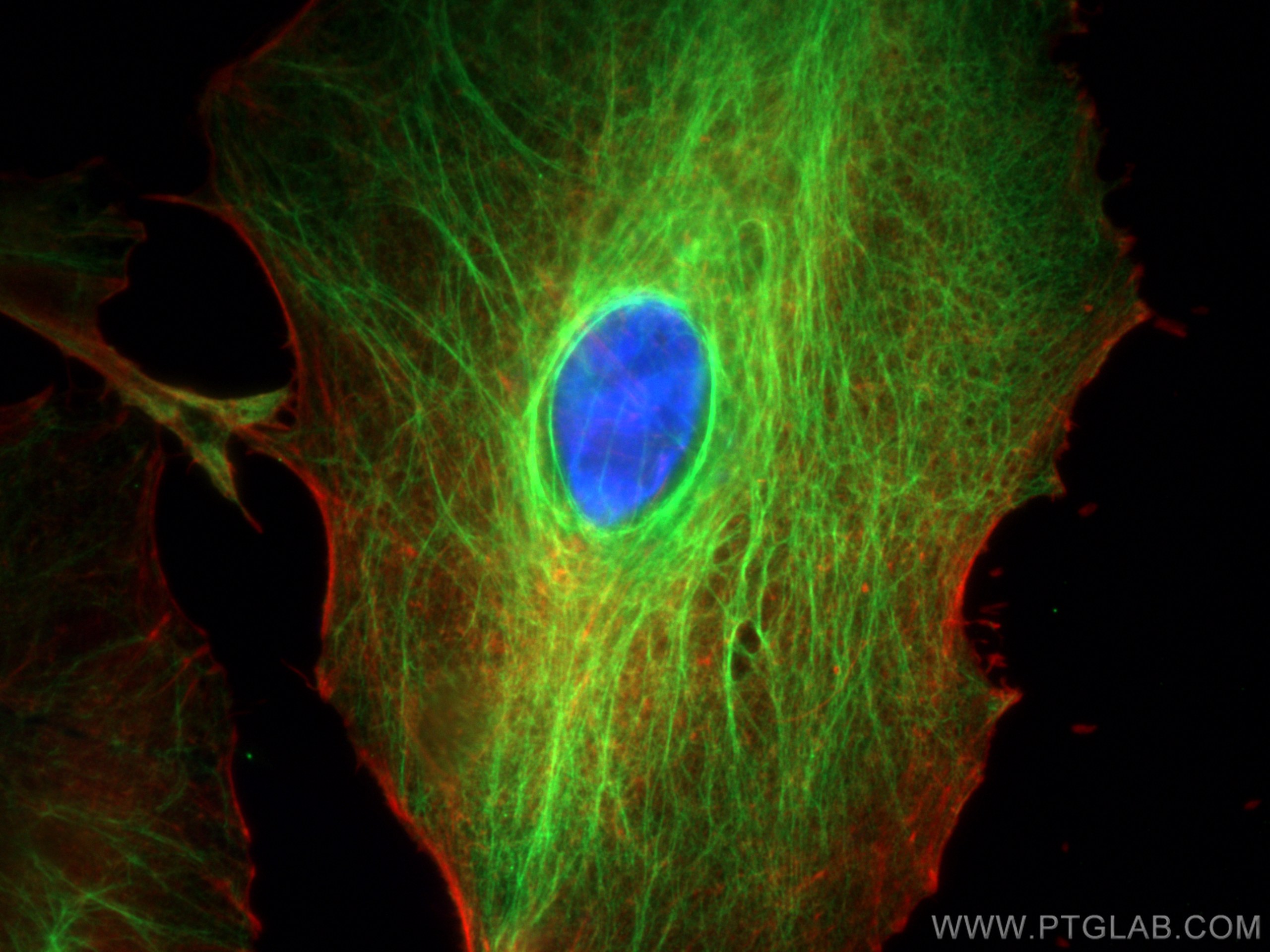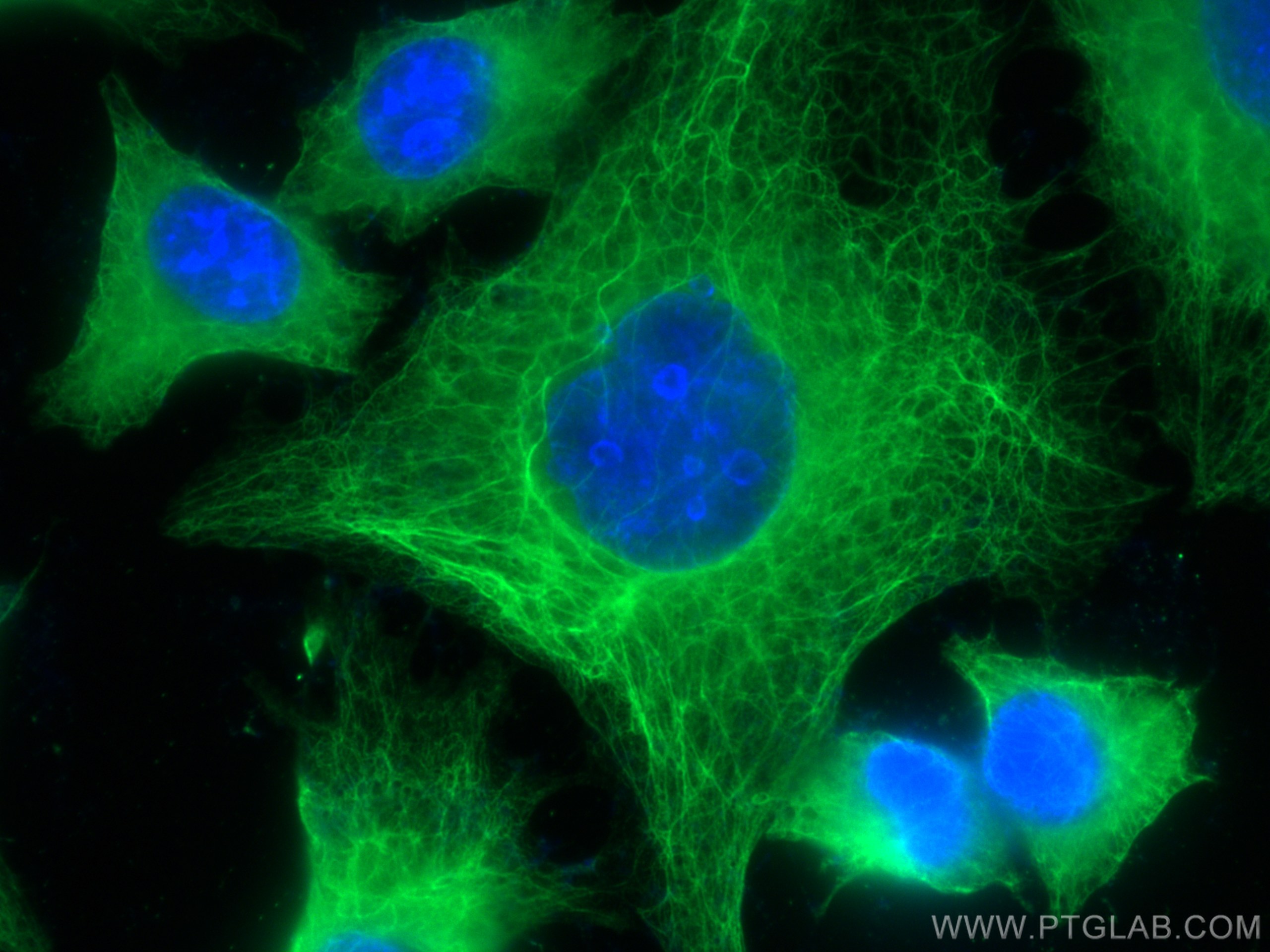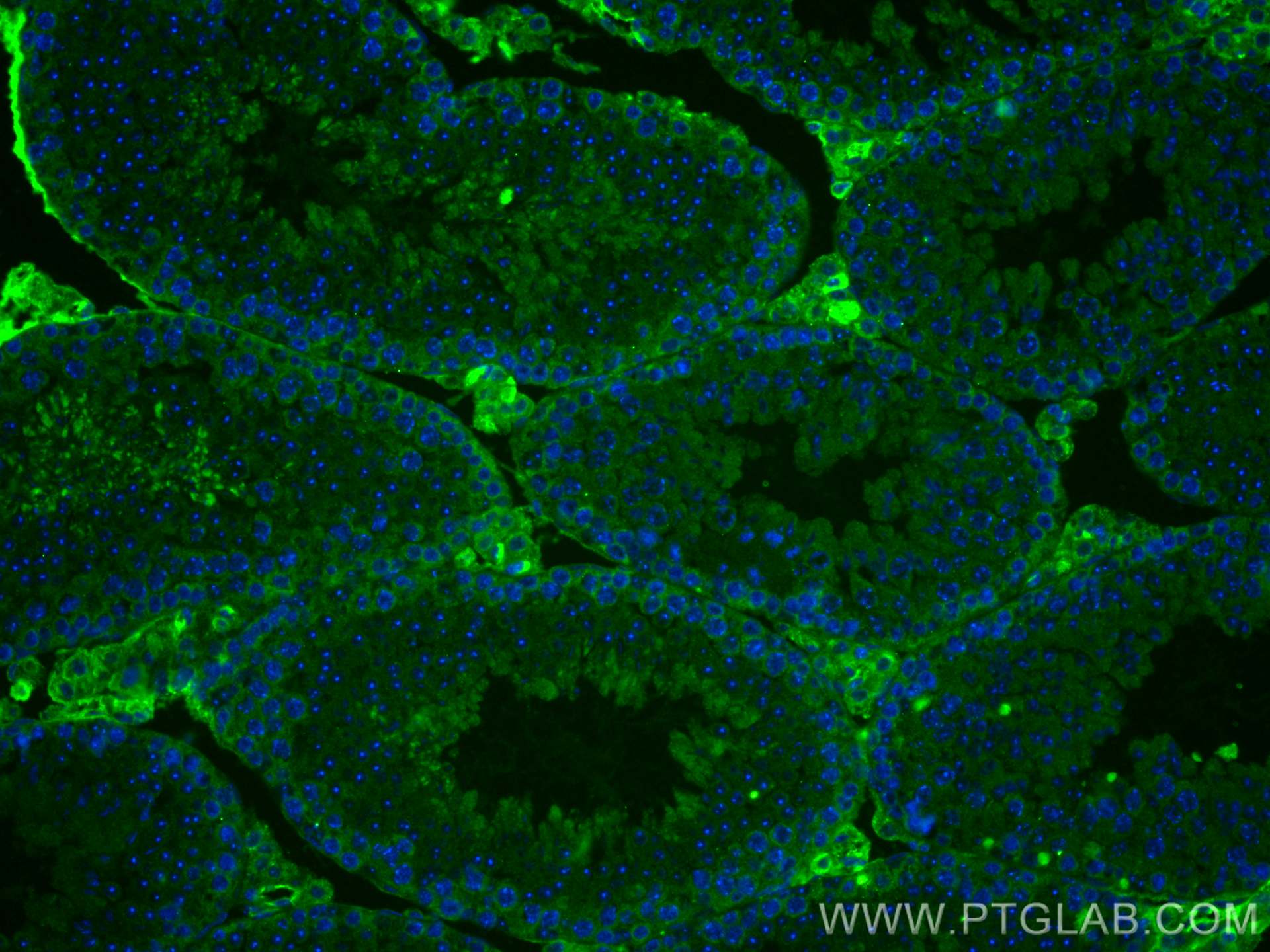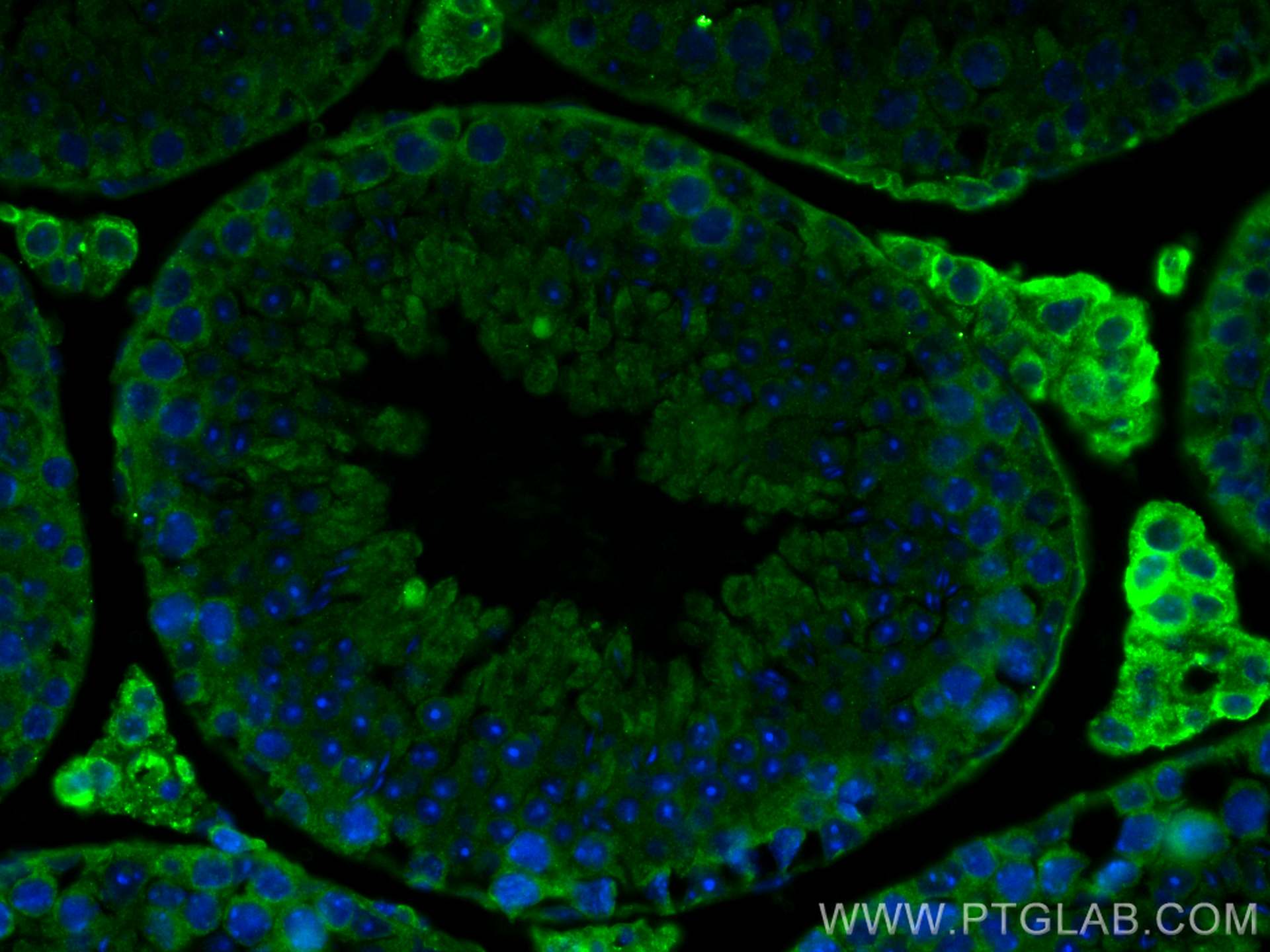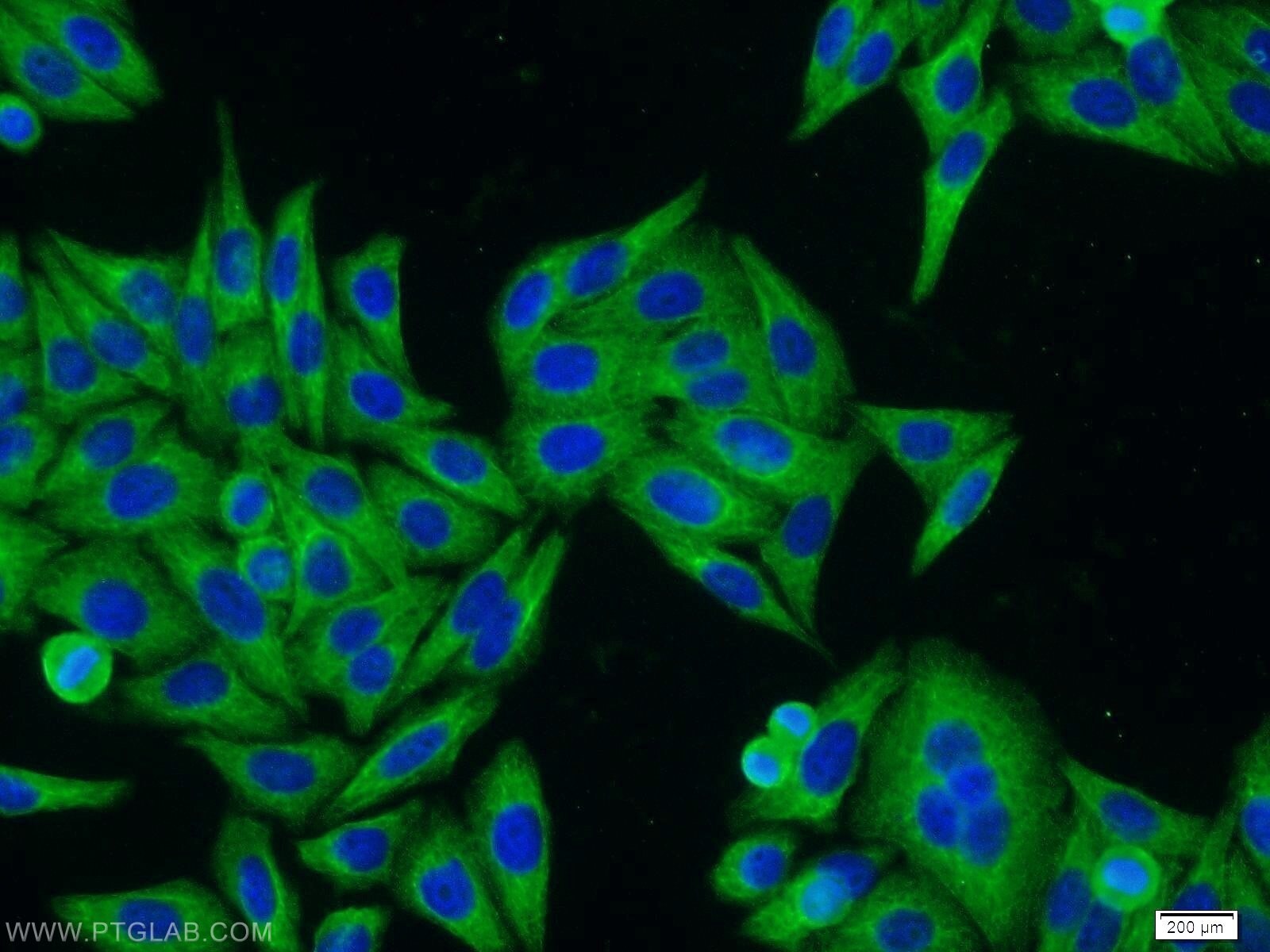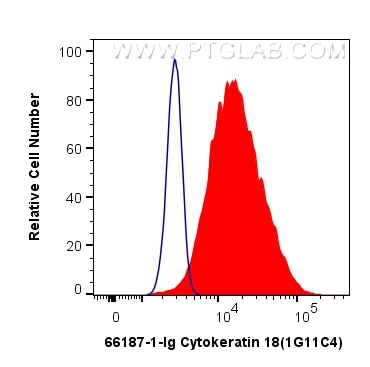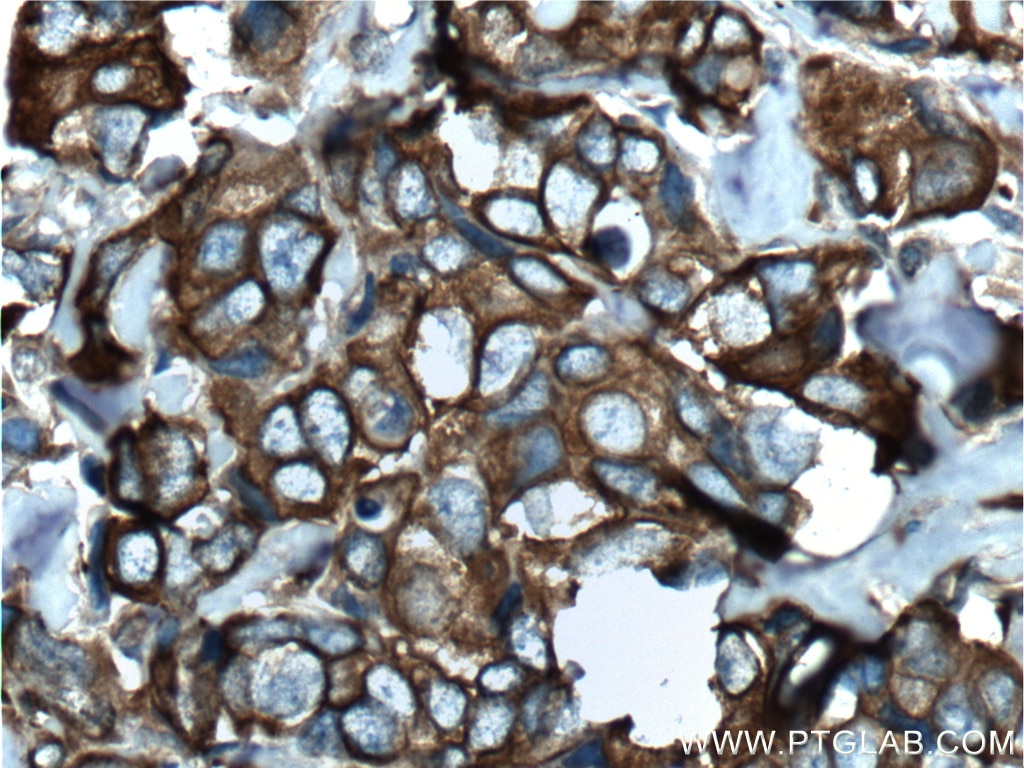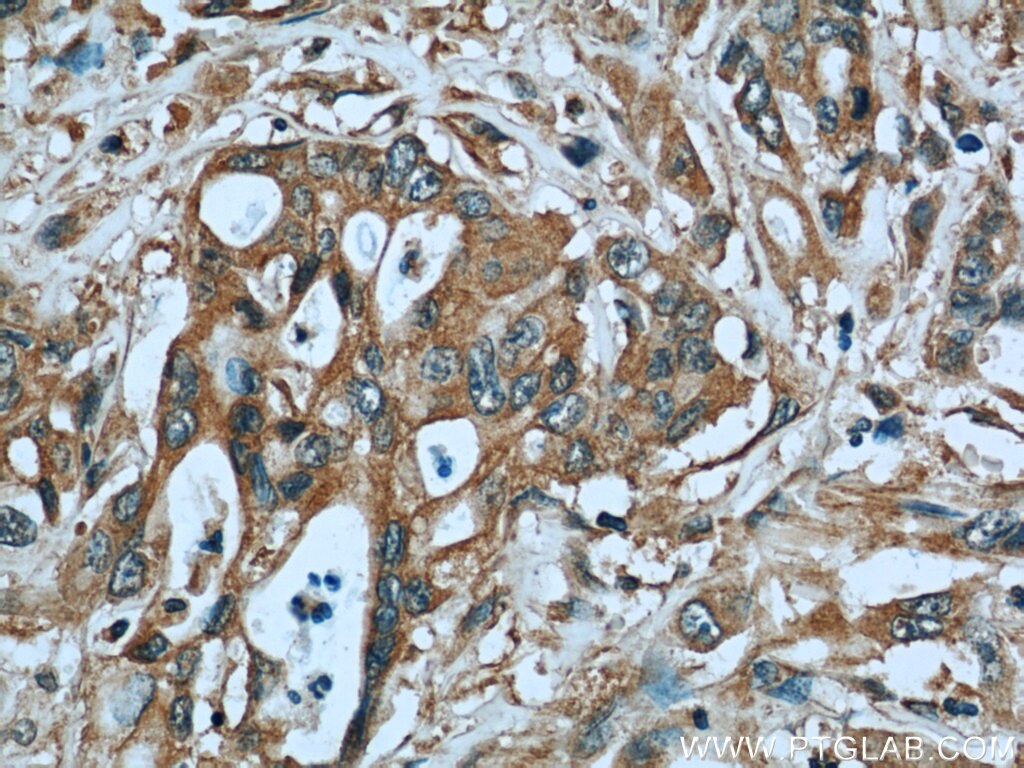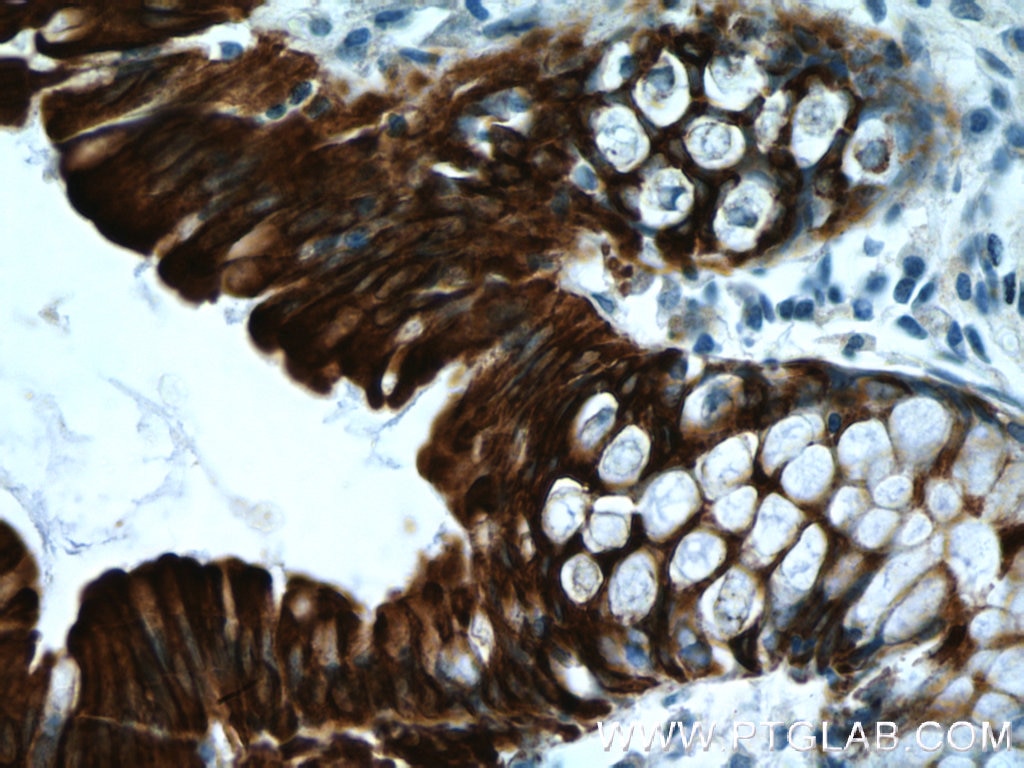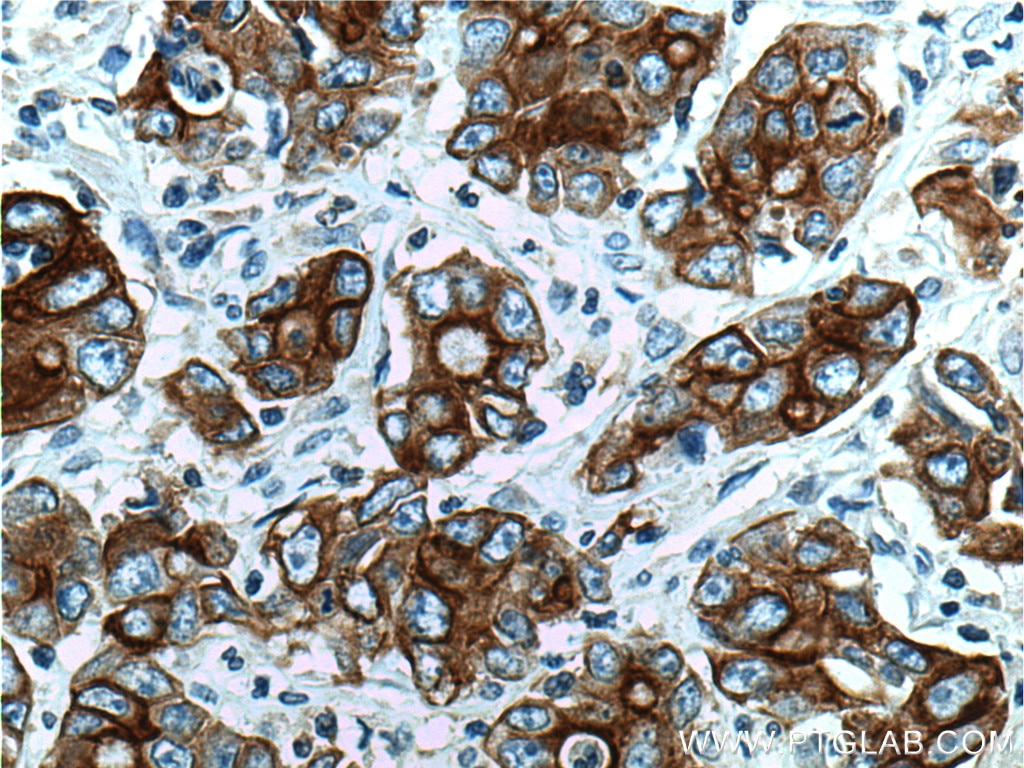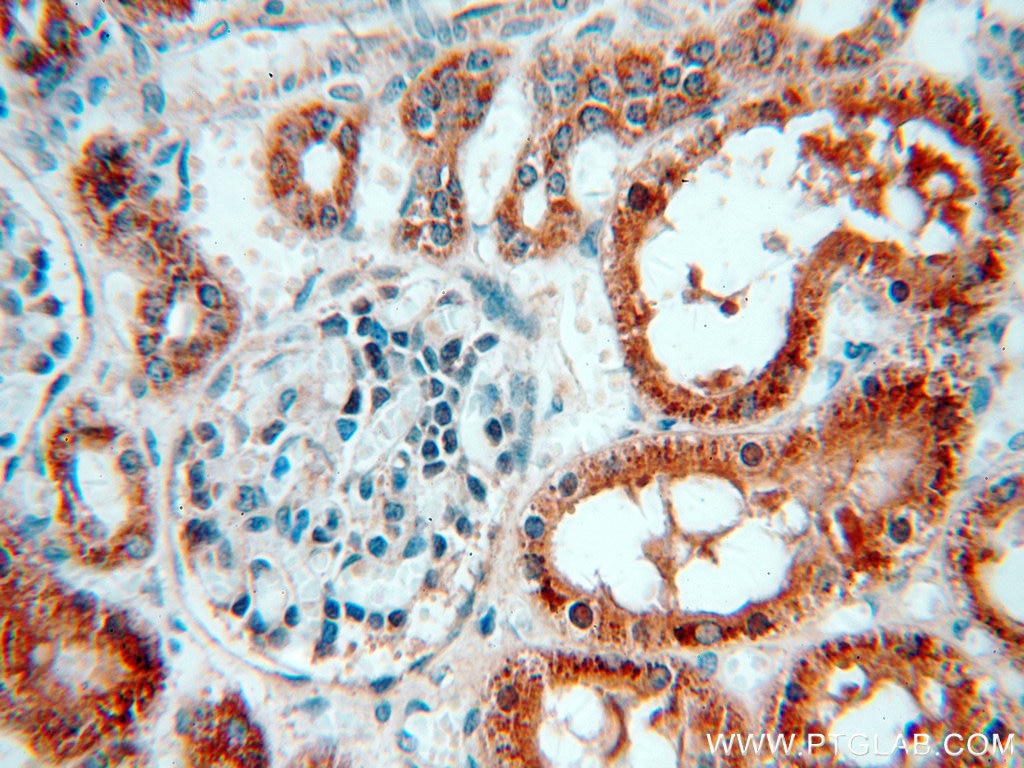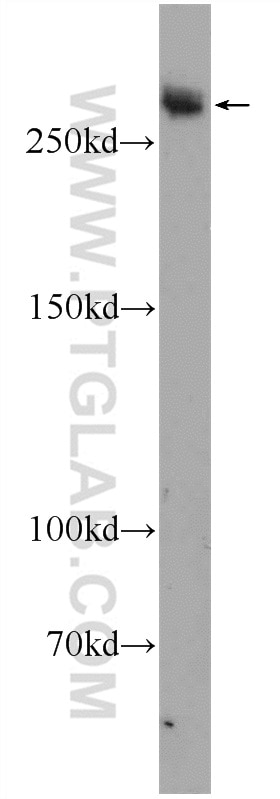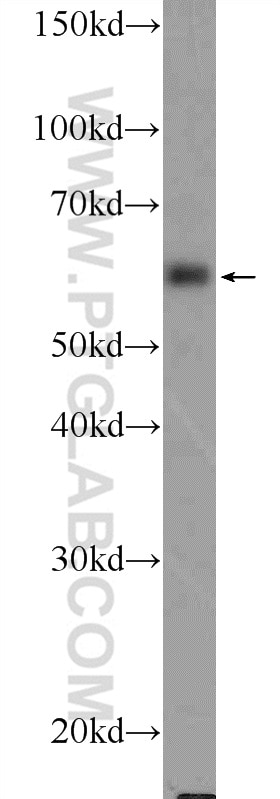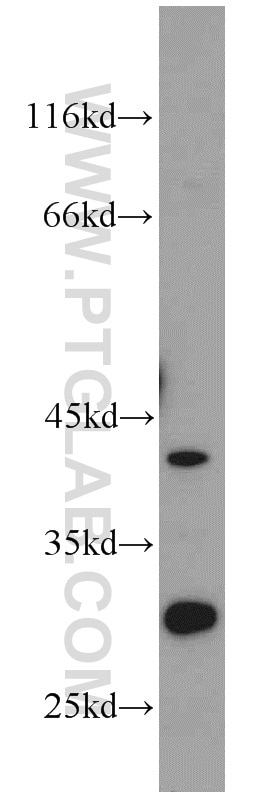Cytokeratin 18 Monoklonaler Antikörper
Cytokeratin 18 Monoklonal Antikörper für FC, IF, IHC, WB, ELISA
Wirt / Isotyp
Maus / IgG1
Getestete Reaktivität
Hausschwein, human, Maus, Ratte
Anwendung
WB, IHC, IF, FC, ELISA
Konjugation
Unkonjugiert
CloneNo.
1G11C4
Kat-Nr. : 66187-1-Ig
Synonyme
Galerie der Validierungsdaten
Geprüfte Anwendungen
| Erfolgreiche Detektion in WB | HCT 116-Zellen, 4T1-Zellen, A431-Zellen, COLO 320-Zellen, Hausschwein-Hautgewebe, HeLa-Zellen, HepG2-Zellen, K-562-Zellen |
| Erfolgreiche Detektion in IHC | humanes Nierengewebe, humanes Kolonkarzinomgewebe, humanes Lebergewebe, humanes Leberkarzinomgewebe, humanes Lungenkarzinomgewebe, humanes Mammakarzinomgewebe, humanes Nierenzellkarzinomgewebe, humanes Tonsillitisgewebe, Mauslebergewebe, Mausnierengewebe, Rattenlebergewebe Hinweis: Antigendemaskierung mit TE-Puffer pH 9,0 empfohlen. (*) Wahlweise kann die Antigendemaskierung auch mit Citratpuffer pH 6,0 erfolgen. |
| Erfolgreiche Detektion in IF | A549-Zellen, HeLa-Zellen, HepG2-Zellen, HUVEC-Zellen, Maushodengewebe |
| Erfolgreiche Detektion in FC | HeLa-Zellen |
Empfohlene Verdünnung
| Anwendung | Verdünnung |
|---|---|
| Western Blot (WB) | WB : 1:20000-1:100000 |
| Immunhistochemie (IHC) | IHC : 1:600-1:2000 |
| Immunfluoreszenz (IF) | IF : 1:200-1:800 |
| Durchflusszytometrie (FC) | FC : 0.40 ug per 10^6 cells in a 100 µl suspension |
| It is recommended that this reagent should be titrated in each testing system to obtain optimal results. | |
| Sample-dependent, check data in validation data gallery | |
Veröffentlichte Anwendungen
| WB | See 2 publications below |
| IHC | See 3 publications below |
| IF | See 7 publications below |
| FC | See 1 publications below |
Produktinformation
66187-1-Ig bindet in WB, IHC, IF, FC, ELISA Cytokeratin 18 und zeigt Reaktivität mit Hausschwein, human, Maus, Ratten
| Getestete Reaktivität | Hausschwein, human, Maus, Ratte |
| In Publikationen genannte Reaktivität | human, Maus |
| Wirt / Isotyp | Maus / IgG1 |
| Klonalität | Monoklonal |
| Typ | Antikörper |
| Immunogen | Cytokeratin 18 fusion protein Ag1260 |
| Vollständiger Name | keratin 18 |
| Berechnetes Molekulargewicht | 48 kDa |
| Beobachtetes Molekulargewicht | 48 kDa |
| GenBank-Zugangsnummer | BC000180 |
| Gene symbol | KRT18 |
| Gene ID (NCBI) | 3875 |
| Konjugation | Unkonjugiert |
| Form | Liquid |
| Reinigungsmethode | Protein-A-Reinigung |
| Lagerungspuffer | PBS mit 0.02% Natriumazid und 50% Glycerin pH 7.3. |
| Lagerungsbedingungen | Bei -20°C lagern. Nach dem Versand ein Jahr lang stabil Aliquotieren ist bei -20oC Lagerung nicht notwendig. 20ul Größen enthalten 0,1% BSA. |
Hintergrundinformationen
Keratins are a large family of proteins that form the intermediate filament cytoskeleton of epithelial cells, which are classified into two major sequence types. Type I keratins are a group of acidic intermediate filament proteins, including K9-K23, and the hair keratins Ha1-Ha8. Type II keratins are the basic or neutral courterparts to the acidic type I keratins, including K1-K8, and the hair keratins, Hb1-Hb6. KRT18, also named as CYK18, PIG46 and K18, is the most commonly found members of the intermediate filament gene family. KRT18 is a type I keratin which is found primarily in non squamous epithelia and is present in a majority of adenocarcinomas and ductal carcinomas but not in squamous cell carcinomas.
Protokolle
| Produktspezifische Protokolle | |
|---|---|
| WB protocol for Cytokeratin 18 antibody 66187-1-Ig | Protokoll herunterladen |
| IHC protocol for Cytokeratin 18 antibody 66187-1-Ig | Protokoll herunterladen |
| IF protocol for Cytokeratin 18 antibody 66187-1-Ig | Protokoll herunterladen |
| Standard-Protokolle | |
|---|---|
| Klicken Sie hier, um unsere Standardprotokolle anzuzeigen |
Publikationen
| Species | Application | Title |
|---|---|---|
Redox Biol ACSL4 deficiency confers protection against ferroptosis-mediated acute kidney injury. | ||
J Pathol Histone demethylase PHF8 drives neuroendocrine prostate cancer progression by epigenetically upregulating FOXA2. | ||
Hum Reprod T-cadherin inhibits invasion and migration of endometrial stromal cells in endometriosis. | ||
Stem Cell Res Ther Expansion of mouse castration-resistant intermediate prostate stem cells in vitro | ||
Commun Biol Single-cell analysis supports a luminal-neuroendocrine transdifferentiation in human prostate cancer. | ||
Foods Mutation of Signal Transducer and Activator of Transcription 5 (STAT5) Binding Sites Decreases Milk Allergen αS1-Casein Content in Goat Mammary Epithelial Cells. |
